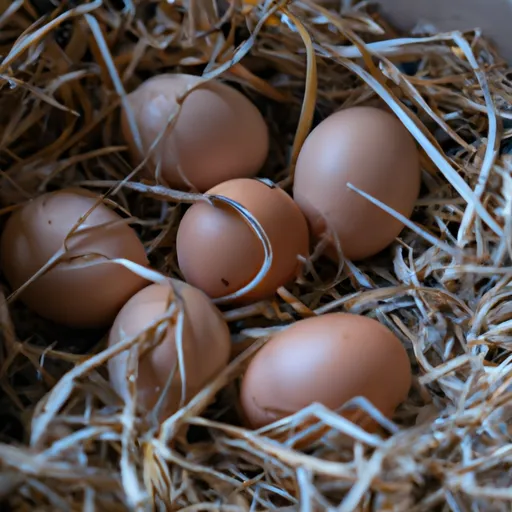Brown Egg Laying Chickens 101: Everything You Need to Know About This Popular Breed
Are you thinking about keeping chickens in your backyard?
If so, brown egg-laying chickens might be the perfect choice for you.
In this article, we’ll cover everything you need to know about these popular birds, including their benefits, housing and feeding requirements, common health issues, tips for handling and training, collecting and storing eggs, and even some delicious recipes using brown eggs!
Introduction to Brown Egg Laying Chickens
Brown egg-laying chickens are a type of chicken that is known for its hardiness, adaptability, and prolific egg-laying abilities.
They come in various breeds, but the most common ones include:
- Rhode Island Reds
- New Hampshire Reds
- Plymouth Rocks
- Barred Plymouth Rocks
These chickens are typically docile and friendly, making them great pets for families with children or those who want to keep chickens as companions.
The Benefits of Keeping Brown Egg Laying Chickens
There are many reasons why people choose to keep brown egg-laying chickens.
For one thing, they are excellent layers, producing large quantities of tasty, nutritious eggs on a regular basis.
Additionally, they require minimal maintenance, which makes them ideal for busy homeowners who don’t have time to devote to extensive chicken care.
Another benefit of keeping brown egg-laying chickens is that they can help reduce waste by eating insects, snails, slugs, and other garden pests.
They also produce high-quality manure that can be used as fertilizer for gardens and lawns.
Finally, raising chickens can provide an opportunity to teach kids about animal husbandry and responsibility.
Choosing the Best Breed for Your Needs
When choosing a breed of brown egg-laying chicken, there are several factors to consider.
First, think about how much space you have available for housing and whether you prefer a larger or smaller bird.
See also What You Can Give Your Sick Chicken: Home Remedies and Natural Antibiotics for Common Chicken Illnesses
Some breeds, like Rhode Island Reds, are more suited to confined spaces than others.
Second, consider the climate where you live and choose a breed that can tolerate extreme temperatures if necessary.
Third, think about your goals for keeping chickens – if you plan to show them at competitions, certain breeds may be better suited for that purpose.
Housing and Feeding Requirements
To house brown egg-laying chickens, you will need a coop with nest boxes, roosts, and enough room for each bird to move around comfortably.
The size of the coop will depend on the number of chickens you plan to keep, but generally speaking, it should be at least four square feet per bird. It’s essential to keep the coop clean and well-ventilated to prevent disease and maintain good air quality.
As for feeding, brown egg-laying chickens require a balanced diet consisting of layer pellets, grains (such as corn or wheat), vegetables, and fresh water.
You can supplement their diet with treats such as mealworms or scratch grain, but avoid overfeeding them or giving them too much protein, which can lead to excessive egg production and health problems.
Common Health Issues and How to Prevent Them
Like all animals, brown egg-laying chickens are susceptible to illnesses and injuries.
Some common health issues include coccidiosis (an intestinal parasite), mites and lice, respiratory diseases, and fowl pox.
To prevent these issues, it’s essential to keep the coop clean and well-maintained, provide adequate ventilation, and monitor the birds regularly for signs of illness or injury.
Tips for Handling and Training Your Chickens
Handling and training brown egg-laying chickens requires patience and gentleness.
When picking up a chicken, always support its body and avoid grasping it by the wings or neck.

See also Why Do People Keep Chickens? Discover the Benefits and Drawbacks of Raising These Birds
Similarly, when training chickens to perform certain behaviors (like entering the coop at night), use positive reinforcement techniques rather than force or punishment.
With consistent training, your chickens will become accustomed to your presence and respond to your commands.
Collecting and Storing Eggs
Once your brown egg-laying chickens start laying eggs, you’ll need to collect them regularly to ensure freshness and prevent breakage.
Use a soft-bristled brush to clean any dirt or debris from the shell before storing the eggs in a cool, dry place with plenty of air circulation.
Eggs can be stored for up to five weeks without refrigeration, but it’s best to use them within two weeks for optimal taste and freshness.
Using Brown Eggs in Cooking and Baking
One of the biggest advantages of brown egg laying chickens is the flavorful, rich eggs they produce.
Because brown eggs have stronger shells than white eggs, they are less likely to crack during cooking or baking.
They are also higher in omega-3 fatty acids and vitamin D compared to white eggs.
Whether you’re making scrambled eggs, omelets, quiches, or cakes, brown eggs add a unique depth of flavor that’s sure to impress.
Why Brown Egg Laying Chickens are a Great Choice
If you’re looking for a low-maintenance pet that provides fresh, nutritious food for your family, brown egg-laying chickens are an excellent choice.
Their hardiness, adaptability, and prolific egg-laying abilities make them a popular choice among homeowners and hobby farmers alike.
Plus, caring for chickens can be a fun and rewarding experience for people of all ages. So what are you waiting for?
Start researching brown egg-laying chicken breeds today and get ready to enjoy the benefits of keeping these wonderful birds!
